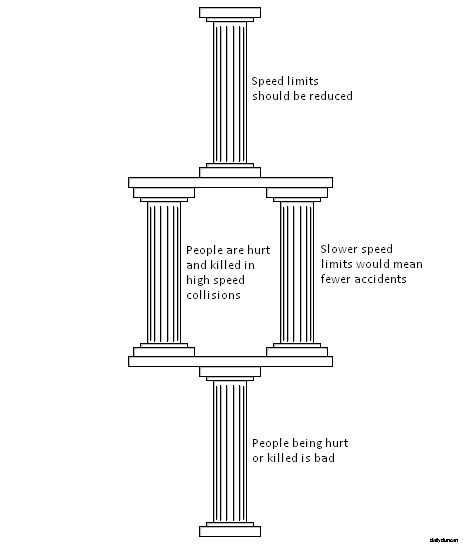Imagine that a bomb’s been planted somewhere in a major metropolis and the only person who knows the location is the one who put it there. If the bomb isn’t disarmed the explosion’s effects will be catastrophic. There isn’t enough time to search for the device, but the suspect was apprehended shortly after he armed it. Unfortunately, the interrogation of the suspect has proven fruitless, and our time is running out. As the person in charge of the situation, what do you do?
- Continue to interrogate the prisoner and hope for a change of heart.
- Torture the prisoner and almost certainly acquire the necessary information.
The second option is much more effective than the first, but everyone knows that torture is wrong because it undermines the presumption of innocence – the foundation for the western judicial system. But what is torture, exactly, and how can we be certain that we aren’t already torturing our prisoner through confinement and interrogation?
The definition of torture is the act of inflicting pain, either physical or mental, often for the purpose of punishment or retrieving information. Conventional torture methods include beating, lashing, shunning, rape, confinement, deprivation of sleep or nourishment and joint manipulation. Most of us would never condone these barbaric tactics, but there are many other techniques that are more subtle and ambiguous.
Aggressive interrogation, or enhanced interrogation, is a term used to describe methods that more closely tread the line of legality, such as waterboarding. Most consider aggressive interrogation to be disguised torture, but how do these techniques differ from those of conventional interrogation? Suspects are regularly isolated, accused, mocked and berated by their captors in order to encourage a confession, and by its very nature, incarceration is a violation of fundamental a human right. In another common example of sanctioned torture, parents will often confine their children or restrict their diet in order to encourage or discourage certain behavior.
It’s clear that our concept of torture may be disturbingly inclusive, but what if there was a way to avoid all these moral predicaments? There is a technique which causes no pain or discomfort, yet it’s powerful enough to cause family members to turn on each other. We’re speaking, of course, about tickling.
Tickling makes the passive flail and claw, the reserved scream profanities and the reasonable abandon their sensibilities. We don’t really consider tickling a serious thing, yet we’ll resort to extreme measures to escape it, often threatening, insulting or injuring those we care about. If tickling can make friends and family commit acts of violence against each other, it must certainly be strong enough to elicit a confession from our bomb-planting prisoner. Even if tickling wasn’t effective in this case, torture methods have been honed for thousands of years, while our understanding of tickling is still quite elementary. It’s likely that, with adequate research, new techniques and devices would be created that would take tickling to a degree we could never imagine.
Terrorists should be tickled.




